Travel Diaries
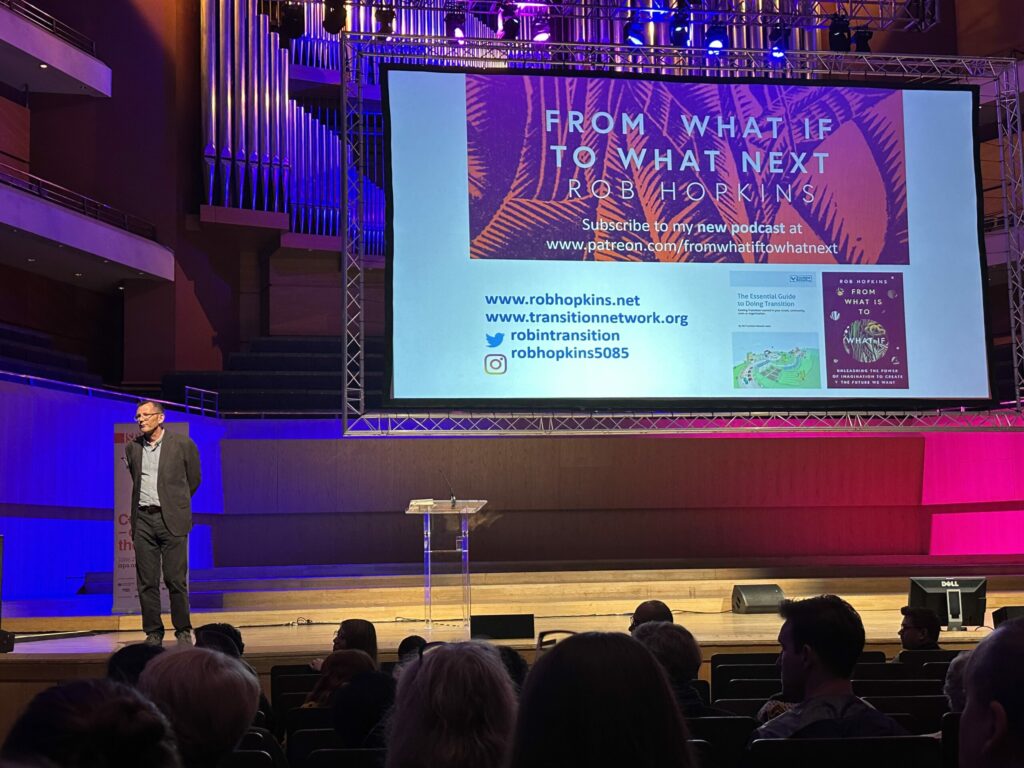
Heart of the Art Aravinth Kumaraswamy, Artistic Director of Apsaras Arts talks about his experience at the International Society for the Performing Arts (ISPA) that was held at Manchester, UK in June 2023. A report… This was the first time that I had the opportunity to attend the International Society for the Performing Arts (ISPA) session representing Apsaras Arts Dance Company. This year’s June 2023 edition was held in the historical city of Manchester in the UK, known for many things including music, football and its contribution to British history. The mission of ISPA is to strengthen the performing arts globally through the advancement of leadership, the exchange of ideas and by fostering a diverse and engaged membership. At the outset, looking at the well-thought through agenda, topics and sessions curated for ISPA Manchester June 2023, had this mission amplified. Co-creating the Future was the overarching theme for ISPA Manchester 2023. “What does co-creation really mean for performing arts leaders? How can co-creation help our sector move forward with intention, relevance and resilience? At the ISPA 2023 mid-year congress, we will come together in Manchester to take stock of where we are, to collectively reflect on these questions and to envisage what the journey forward could look like. Delegates will be challenged and inspired by a range of speakers and panelists, and we will provide space for conversation and exchange. Manchester has creativity and culture at its heart, and we look forward to welcoming delegates to explore the rich offering in the city and across the North West region.” The conference was structured into six key sessions with several other break-out sessions, performances and visits to iconic performing arts venues. The first session shed the spotlight on Co-creating the Future: Leadership and Co-creation. Over the years, there has been much discussion about balancing the power dynamic, but are we seeing any real change? The session deep-dived into who are the players who are setting the global cultural agenda and really whose voices are finding representation in the programming of the performing arts. The second session was titled Co-Creating the Future: Art and Next Generations. This session brought to fore the next generation of leaders and explored the opportunities and training options that are available to them. In line with the idea of co-creation, the session reinforced how co-creating can truly improve opportunities for the next generation. The next session focussed on the idea of equity, and was titled Co-Creating the Future: How do we co-create with equity? Focussing on the best practices in the industry, this session was a refresher in terms of how creators can ensure that all voices have equity in the space and what are some of the challenges and opportunities within. The fourth session was titled Co-creating the Future: The Role of the State in the Arts Sector. As a crucial session, this one was about how the state can actively collaborate with the arts and cultural sector without over-exerting its power; without interfering with thought and expression. The fifth session was titled Co-creating the Future: Sustainable Practice on the Road. This session was focussed on the notion of sustainability and allowed participants a sense of how they can learn from indigenous communities and other regions on how to reduce our carbon footprint. The final session was titled Co-creating the Future: Art and Conflict. There are many examples of arts projects that move to address these conflicts and/or raise awareness about those who are impacted. This session investigated in what ways these projects are effective, and do they, if at all, address the underlying sources of conflict. Each and every session was curated with thought and had enough room for questions and conversations. On the third day of the convention, ten new works were given an airtime to pitch for support and touring opportunities. Mehek, a contemporary dance production, produced by Aakash Odedra Company (UK) featuring Kathak dancers Akash Odera and Aditi Mangaldas caught my attention. Mehek is a new mainstage work by two of the great Kathak dancers of their respective generations: Aditi Mangaldas, dancing the first-ever duet of her 50-year Career with Aakash Odedra. Mehek gives a voice to an unspoken and overlooked love story – that of an older woman and younger man – weaving narrative that celebrates love in all its forms: raw, authentic, and infinitely resonant. In Mehek, the stage transforms into canvas, where bare feet inscribe rhythmic tales of desire, shadows blur and a single finger traces narrative down a trembling spine. These raw moments mirror the complexities of love, its electrifying spark, beguiling allure, shattering heartbreak and soothing comfort. Later that day, ISPA created an opportunity for art makers to share their works in an exhibition format of an Arts Mart. The Apsaras Arts Dance Company stall attracted many visitors which led to very interesting conversations. Overall, attending ISPA Manchester 2023 was a great meeting place to get to know art makers in the industry – from South America to Northern Asia – all under one roof.
Portrait
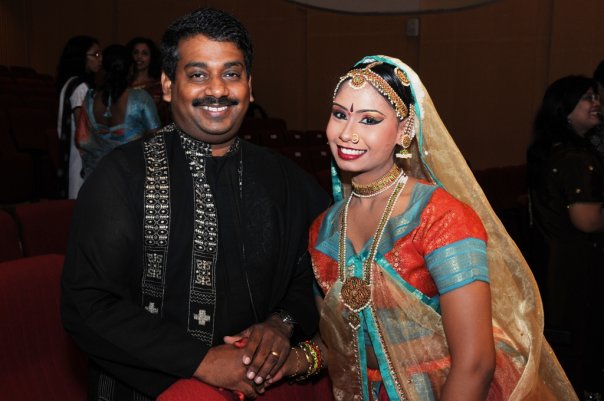
Multi-Tasking with a Magic of her Own! Donning various hats as the Admin Manager of Apsaras Arts, Dancer, Project Manager, Tour Manager, make-up artiste and also as a wardrobe assistant, Sankari Elavalahan gives us an account of her early days of association with Apsaras Arts and her return to work with her Alma Mater Were you born and raised in Singapore? Do you remember how and when dance happened in your life? Yes, I am a second generation Singaporean. My paternal grandparents are from Thanjavur and maternal grandparents are from Karaikal. I was exposed to dance at a very young age. I spent most of my afternoons and weekends at my maternal grandmother’s home as my mother was working full-time and was a part-time bridal makeup artist over weekends. My Chitti, Barathi, who is more of an older sister to me, was learning Bharatanatyam and performing quite frequently at festivals and community centres. I would sit by my mother’s side and watch her dress Chitti for her performance. I was completely awestruck by the costumes, accessories, make-up and the attention she was getting. Once fully dressed, my mother would ask her to pose for photos and I was so fascinated by her flexibility and elegance. I remember having major meltdowns whenever she was leaving and pleaded to them to take me for her shows. My cousin, Shanmugapriya who was also learning Bharatanatyam and touring internationally as part of Neila (Sathyalingam) Maami’s Little Angels, Singapore’s first multi-ethnic children’s dance troupe, was also a huge inspiration for a five-year-old me. I pestered my mother to send me for dance classes and within a few months of attending classes, I had volunteered to perform solo at my pre-school graduation for the then Deputy Prime Minister, current Prime Minister Lee Hsieng Loong. All my classmates cheered for me and it was truly a diva moment for me. You were initiated into dance by none other than Neila Sathyalingam mami. What were your early experiences with her and how did she inculcate the love of dance in you? I started learning formally at the age of five with Vani Akka aka Kamalavani Anbarasu who was a senior student of Neila Maami at the Kallang Community Centre. Vani Akka was an excellent dancer herself and as a teacher she was approachable, patient and motivating. She made learning dance enjoyable while focusing on achieving the desired outcomes with us. My early encounters with Neila Maami was when she would take our classes on days when Vani Akka had to be away. I was so frightened by the tall, big-eyed, Neila Maami with a strong British accent, and her thattu kazhi, which she used to point at students and correct our postures. As I entered teenage, like all teenagers, I started having a love-hate relationship with Bharatanatyam and was not attending classes regularly, which I regret deeply till this date. However, Neila Maami noticed that I had a natural flair for semi-classical, folk and filmy dance items and initiated me to join The People’s Association (PA) Indian Dance Troupe where she was the choreographer, just to keep me dancing. I was a Star amongst The Galaxy as the theme for our float was The Milky Way as part of the 1999 Chingay Parade. Chingay Parades are huge fun with over 30 cultural contingents all over Singapore and Asia gathering annually for a lively display of Singapore’s multicultural heritage. Instead of discouraging and correcting my Bharatanatyam style, Neila Maami recognised my energy and passion in dance and showed me a path that would continue to inspire my journey. Maami was a visionary and all she wanted was for her students to keep dancing and for the flame to stay alive and burning. Talk to us a bit about your performance career in dance. Are you also trained in nattuvangam and music? If yes, tell us a bit about it. I started at the age of 15, as the youngest troupe member in 2000 at the PA Indian Dance Group and was given training to various dance forms such as Chinese Dance, Malay Dance, Modern Dance, Flamenco, Bhangra, Thevarattam, Mayilattam and Kalaripayattu. We even had a trainer from the Chennai Raack Academy of Dance to train us in Bollywood HipHop. Although I was very much active at PA with a two days a week training routine, I continued my Bharatanatyam practice with Neila Maami at the Telok Ayer Performing Arts Centre (TAPAC) over weekends and performed regularly at the Navarathri festivals and community events. I was also heavily involved in local TV dance competitions representing my tertiary institution in which we had emerged as runner-up and champions in my final year. One evening after the PA rehearsal, in the car with Maami, as usual Maami was asking about our thoughts regarding a recent Arangetram we had attended. I innocently shared with her that if I was ready to do an Arangetram and that I would like to do an all film song margam instead of the usual so that it would be more relatable and be better enjoyed by my family and the audience that would attend. She listened quietly and said. “Mama will never agree to this!”. Sathyalingam Mama that way was quite a traditionalist. In February 2008, during the Sivagami, post-show appreciation lunch and Maami’s birthday celebration, I went to Mama and Maami to get their blessings, when she turned around to Mama and said, “Listen, please bless this girl as she would like to get an all film song Arangetram.” I was pleasantly surprised and elated. Firstly, it was news that I was ready for my Arangetram and secondly, the fact that she was actually proposing the all film song Arangetram idea to Mama. Soon after that event, my Arangetram preparations began. My mother and I flew to Chennai and we were introduced to Radhika Shurajit M’am to choreograph two items, Om Namashivayaa from the famous Tamil film, Salangai Oli as my Padam and Thillana from the Tamil
In Sights
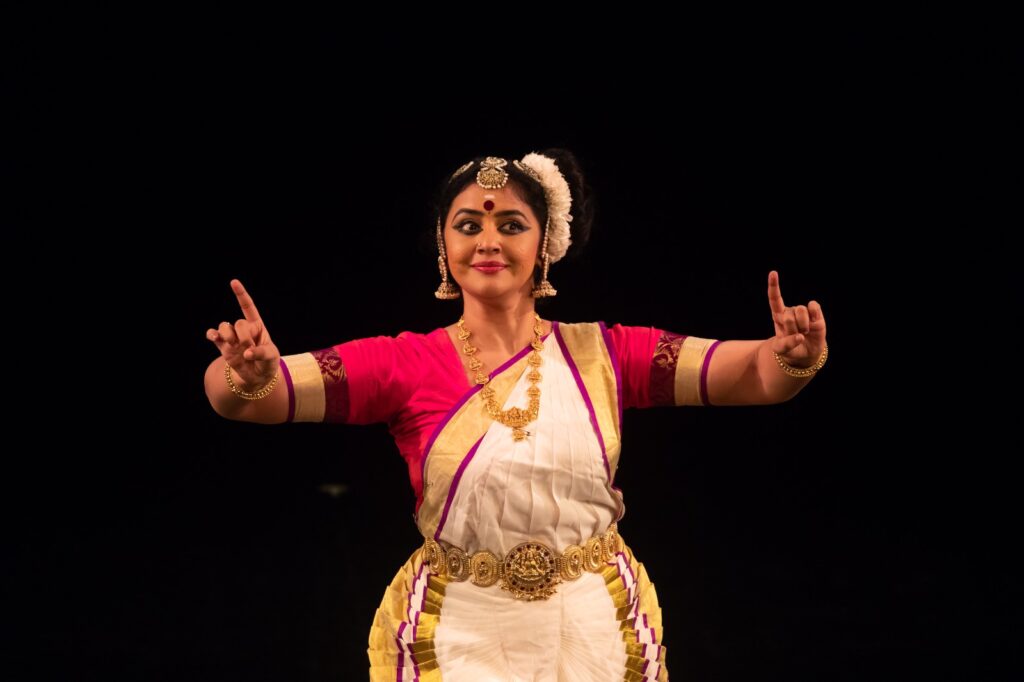
Looking back at IPAC The Indian Performing Arts Convention (IPAC) 2023 forayed into its 12th edition this year and was held between June 17 and June 25, this year. IPAC featured week-long Masterclasses, lecture demonstrations and performances by distinguished faculty from India. Read on for a summary of what it entailed… The Convention began with an invocation by the students of Mohanapriyan Thavarajah, followed by a sharing by Artistic Director of Apsaras Arts, Aravith Kumarasamy, wherein he introduced the Convention and what’s in store. With careful thought and planning, IPAC featured Masterclaasses for dance and music that were curated for practitioners and teachers across different levels in the arts. The lecture demonstrations too straddled an array of subjects and were presented with clarity and conviction by the presenters. Bharatanatyam exponents, Rama Vaidyanathan and Bragha Bessell conducted Masterclasses for Intermediate and Advanced levels of dance practitioners while Priyadarsini Govind and Ramaa Bharadvaj held sessions for aspiring teachers on methods and techniques of teaching and choreographing for dance. The inaugural day workshop was conducted by Bharatanatyam dancer-choreographer-teacher, Shankar Kandasamy who worked around the theme of Finding Poetry in Nrtta. There was also a special workshop by Koodiyattam exponent, Kapila Venu on how to prepare the body for Koodiyattam. This was a truly insightful session and also allowed participants a good understanding of the basics of Kootiyattam. VR Devika, Ananda Shankar Jayant and Methil Devika also presented lecture demonstrations as part of IPAC. IPAC also had space dedicated for music and two Masterclasses – one on vocals and another on violin – were conducted by Dr S Sowmya and Embar Kannan respectively. For a complete coverage on IPAC Masterclasses and lecture demonstrations, read this article featured in Sruti. The highlight of IPAC, as always, is the showcase of performances by artistes, every evening and this year too it was grand and meticulously planned by the Artistic Director of Apsaras Arts, Aravinth Kumarasamy. Bharatanatyam dancer, writer, educator and storyteller Ramaa Bharadvaj reviewed three performances that stood out in this series of evening showcases… Here are some key highlights from her observations… Koodiyattam exponent Kapila Venu’s Mahishasuravadham premiered on Day one, June 23, 2023 of IPAC. In Ramaa’s words, the Esplanade- Theatre on the Bay, turned silent as they watched Kapila breathe life into the character of Devi and transform into a Devi herself. It was a moving performance and the audience gave the performance a standing ovation. The second best performance according to Ramaa Bharadvaj was Mohanapriyan Thavarajah’s Skanda Rasam, a solo work on Lord Muruga. In Ramaa’s words, the true flavour of Skanda rasam was evident right from the decorations of the theatre to the backdrop of the stage, in the dance, the costume, aesthetics and the music. In total, everyone was soaked in the fervour of Muruga. Aravinth Kumarasamy’s story narration in between the pieces added effect and edge to the already splendid performance. Anaavaran, Mohiniattam exponent, Methil Devika’s performance also stole the hearts of the audience. Her performance comprised a six-part presentation of carefully chosen pieces depicting a variety of emotions. Devika’s brilliance as a dancer, choreographer, performer and musician came across very clearly in her performance, said Ramaa Bharadvaj. IPAC at the Esplanade – Day 1 (Mahishasuravadham – The slaying of Mahishasura – Kapila Venu)By Ramaa Bharadvaj One of the highlights of the IPAC experience consisted of the professional showcase performances presented by Apsaras Arts in collaboration with the Esplanade Theater. Curated carefully by Aravinth Kumarasamy, this year, there were three events that acted like three crowning ‘kalasams’ to the IPAC temple tower. Here I share my experience of each evening in three parts. PART 1 of 3: June 23, 2023: “MAHISHASURAVADHAM”:The first day of IPAC’s Showcase performance at Esplanade began with the booming sounds of “mizhavu’ and ‘edakka’ drums bringing not only ‘God’s own Country’ to Singapore, but the goddess Herself. Petite in form but massive in energy was Kapila Venu as she presented the slaying of Mahisha in Kerala’s Koodiyattam style. The daughter of the legendary exponent G. Venu, Kapila is the ideal torchbearer of her father’s legacy. She depicted Mahishasura’s fierce encounter with Devi through deliberately controlled and highly stylized gestures, radiating a mesmerizing intensity. Finally, as Devi drinks over and over from the wine goblet and rises in intoxicated ferocity to behead the ‘asura’, the audience watched Kapila’s fearsome transformation in reverential silence.The Natyashastra speaks of the success or ‘siddhi’ of a performance as being of multiple kinds. Of these, the ‘dhaivi siddhi’ or divinely blessed success is said to elicit stunned silence from spectators. Kapila’s performance had that effect on the audience, but only for a brief moment; for soon the entire theater jumped to their feet to acknowledge her marvelous mastery, with a sustained ovation. As for me personally the effect continued long after I walked out of the theater and joined my colleagues at a restaurant for dinner. How does one walk up to a goddess and tell her she was spectacular? Finally, when I did tell her how I felt she laughed sweetly, and we became friends. That’s right! I befriended a goddess!I’ll see you tomorrow with my views on the second performance, when a warrior god manifested onto the Esplanade theater!– Ramaa Bharadvaj (July 11, 2023) IPAC at the Esplanade – Day 2 (Skanda Rasam – Mohanapriyan Thavarajah )By Ramaa BharadvajOne of the highlights of the IPAC experience consisted of the professional showcase performances presented by Apsaras Arts in collaboration with the Esplanade Theater. Curated carefully by Aravinth Kumarasamy, this year, there were three events that acted like three crowning ‘kalasams’ to the IPAC temple tower.In this writing, I share my experience of each evening in three parts.PART 2 of 3: June 24, 2023: “SKANDA RASAM”: When Mohanapriyan Thavarajah chose to devote his solo evening’s work to Lord Skanda, that beauteous God must have been pleased, for as it turned out, this second evening of Esplanade showcase fell on the exact day of Sashti, most sacred for Skanda worship, but
Cover Story
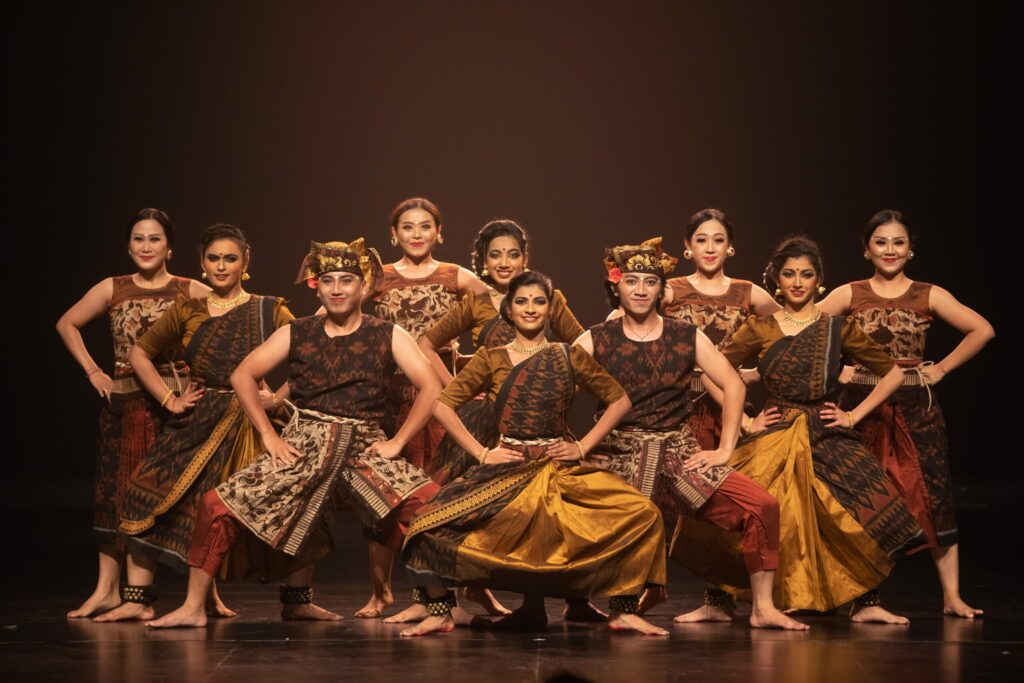
Three costume designers Lakshmi Srinath, Sandhya Raman and Mohanapriyan Thavarajah from Chennai, Delhi and Singapore respectively, share their process, insights and views on designing and creating costume for dance and dancers Lakshmi Srinath “My interest in costume grew organically as a result of my passion and career as a visual artist” “My interest in costume design was organic as a result of me being a visual artist. I had a children’s boutique for about ten years and I started making personalized clothes for people. This went on for a long time. One of my customers, Uma Ganesan from Cleveland, an arts patron and curator, wanted me to design the costume for her upcoming dance production. I protested initially but then she insisted that she liked my vision, aesthetics and the way I put things together. She placed her trust on me and was the one who started off this spark in me. It was a tremendous effort but it went off very well. I created costumes for her production, Silappadikaram and that was my foray into costume for theatre and dance. I used to design theatre costumes for The Madras Players back in the day but in the context of dance, this was my first experience. I am eternally grateful to Uma because she opened up an entire new creativity in me.” “Priyadarsini Govind was ready to experiment and gave me full freedom with design” “After designing costumes for Uma Ganesan’s production in 2004, I did a few designs for Bharatanatyam exponent Meenakshi Chittaranjan. Then of course, with Bharatanatyam exponent, Priyadarsini Govind, I’ve had a long-standing association. Priya was ready to experiment and give me complete freedom but at the same time I had to keep in mind the requirements/ requisites needed for concerts at venues like the Music Academy and so on. I was also not unconventional in thought and it worked for her too. She is a great person to work with. I also did the costume for the theatre production Angkor in Singapore, in which Priya played the lead role and she requested Aravinth Kumarasamy for me to create her and Anjana (Anand)’s costume. I was very happy to do this and it was an amazing experience.” “The wearer of the costume is the most important” “Priyadarsini Govind used to experiment quite a bit and I introduced different kinds of fabrics apart from the traditional Kanjeevaram silks, which most of the dancers tend to use. We tried different textures and she was very happy to experiment. So it definitely depends on the person! I have also done lots of clothes for singer TM Krishna as well. He gave me complete freedom and asked me to do what I want. He was open to trying different colours and was flamboyant, which actually goes well with his personality. I work best if I am given a long rope.” “The stage is like a canvas and it is important that the balance is maintained” “It is not a different hat but there are different aspects with which I approach the work. When there are four or six dancers on stage, the look of each dancer has to complement each other. It also depends on the characters they play and for me, the most important thing is the colour. Usually when I see a stage, the balance has to be perfect because it can’t be a lop-sided vision. So it is very important for me that I approach it with a sense of colour. Colours have to synchronize so well that one person cannot look heavier visually than the other. I also found from experience that colour blocking was most effective on stage. I find the tiny prints that look very pretty appear as a huge mass on stage and I learnt not to use them. The stage is like a canvas and it is important that the balance is maintained.” “People do say that they see me in my designs” “India is resplendent with weaves and different kinds of textures. Since I am an artist, my work has a lot of textures in it. So my eye automatically goes towards textures. I love handlooms, anything done by hand and the imperfections in it. Textiles also fascinate me a lot and this work has given me an opportunity to work with textiles from an artist’s perspective. It has been a great experience! I don’t know if I have a signature style. All I know is it has to look perfect in my eyes. I am not sure if that is my style. But people do say that they see me in my designs. I just work from my heart!” “The storyline is very important in important for me in the context of design” “I always insist on the brief to be clear so that I have an idea on what I am supposed to do. Then I share my thoughts with the producer and when we are in sync, I come up with the sketches. The fabric is very important while designing. When a character walks in with a few other characters already in the background, it all has to synchronize beautifully. So I first pen down the colors out and then check their availability in stores. Then I try to synchronize with what is available and come up with a scheme. The designs are fairly standard. For costume, it is important to keep in mind that it should be easy to dance in, easy to change into and fabrics that can be maintained easily without much ironing. Because, most dancers travel a lot and do multiple shows and it gets difficult to iron or steam out the costumes for every show. So it has to be practical. So basically the costumes need to have visual beauty, a structure which is easy to dance in and fabrics which are easy to manage- packing and carrying around. Also, there is jewellery too which needs to be in sync. It is important
#iamayoungdancer
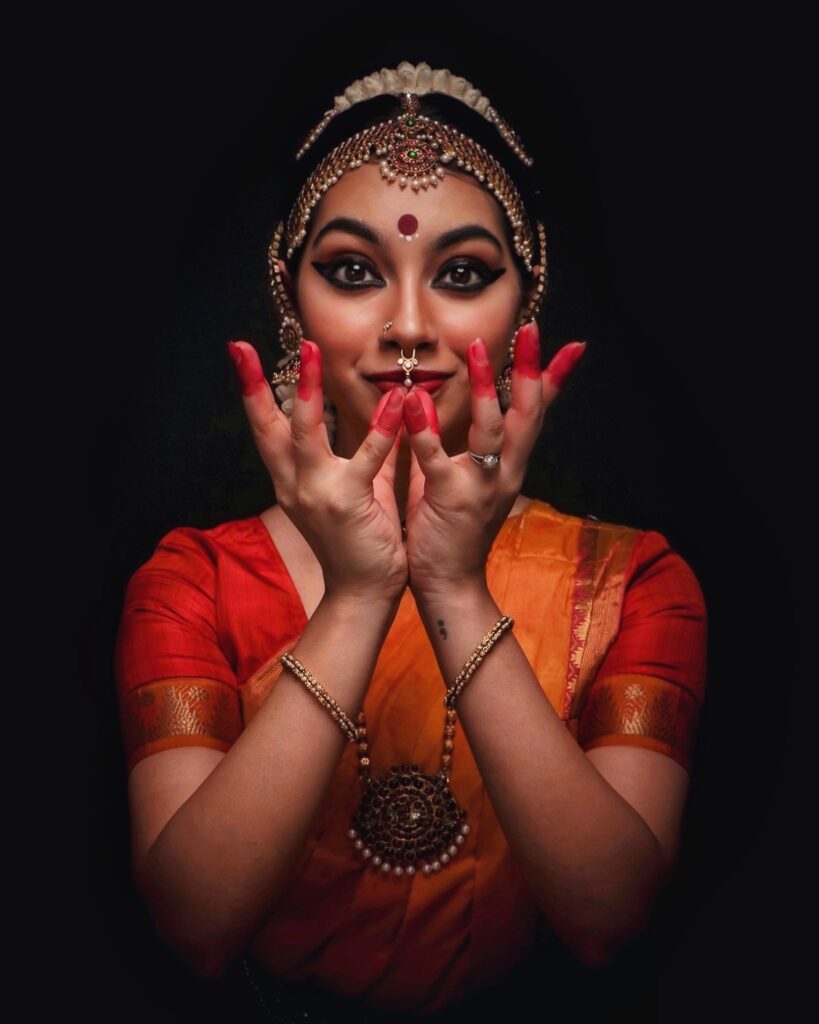
Singapore-based dancer, Periyachi Roshini asks Bengaluru-based dancer, Shreema Upadhyaya, a few pertinent questions that concern the world of young dancers across the globe Do you feel like as a dancer, you live two separate lives? As a dancer most of the time, we are expected to uphold a certain image that may not necessarily be our quirky and unique self. Do you feel that especially since you have a following you feel the need to succumb into the expectation of being the ‘dancer’ Shreema rather than Shreema as a person. Or do you feel both the Shreemas co-exist as dancer and person. I bring this up also because I know of many dancers who have a public account where the account is solely for dance content and then a personal account where they can post about their daily lives, fun stuff, etc… Your thoughts I think with any profession these boundaries exist, and they exist with good reason. When working in such a setting, I think our personalities definitely have to take a backseat. And a lot of dancers prefer to separate their career from the rest of their life. Social media has definitely blurred a lot of lines in that sense. It is neither strictly professional nor personal. I myself have a single account where I showcase both my work and share glimpses of my life, essentially whatever I am comfortable with putting ‘out there’. I do receive flak for certain choices, but then again who doesn’t? I believe I shouldn’t let the fear of that stop me from being myself, or rather make me pretend to be something I’m not. It could help someone else be more comfortable being their true selves as well. Dancers can have fun too! Are you currently a full-time artiste? If so, how sustainable is taking up the arts as a career? Sustainable in the sense physically, what do you do to make dancing a durable art form? Financially, what are some things that help you sustain as a full- time artiste? I am a full-time artiste. Financially, I do agree that the classical arts are not quite yet there in terms of adequate compensation. But from what I have experienced, in today’s world, the possibilities are quite endless, if one puts their mind to it. It does require a great deal of planning, creativity and exploring different kinds of projects at times. In the end, knowing what one wants and which path to take, a sense of direction helps make life in the arts sustainable as a career. Discipline, hard work and most of all patience really pays off in this field. Nothing happens overnight, so pacing ourselves physically and mentally can keep us healthy, and dancing in the long run! How do you think the arts industry can better support upcoming artistes in creating work in terms of grants system/opportunities/mentorship programs, etc? A lot of young artists today don’t really have the access or means to financial support systems such as grants, simply due to a lack of social privilege. Making these processes more transparent and equitable would definitely be the first step. There has certainly been a lot of change that has been brought by the current generation of artistes and mentors, as long as we continue moving in the right direction! What inspires your creativity? As a dancer, you seem to have carved out a style that is unique to you, was there a process to it? Do you look outside of your learnt art forms for inspiration? I remember asking this question to my guru, Praveen Kumar, once, and I’ll always remember his answer. Inspiration can come from absolutely anywhere. And so observation is key. From nature, literature, the people we meet, experiences, sometimes the most mundane of human activities. And art is simply bringing out these observations, beautifying them. I love experiencing other art forms too, whether it is music, dance, paintings and not necessarily those native to our culture. There is so much give and take that can occur once one begins to understand the approach to one’s own art form first. Finally, where do you see yourself in the future and what do you want to bring to the table in this industry? I see myself dancing for however long I can. Art has a way of humbling us the more we explore it and attempt to master it. While I’m not certain of what I bring to the table, I truly hope this process of learning and practicing continues taking me on a beautiful yet challenging journey. And as a tiny speck, I can take this art forward in some way.
Work-in-Process
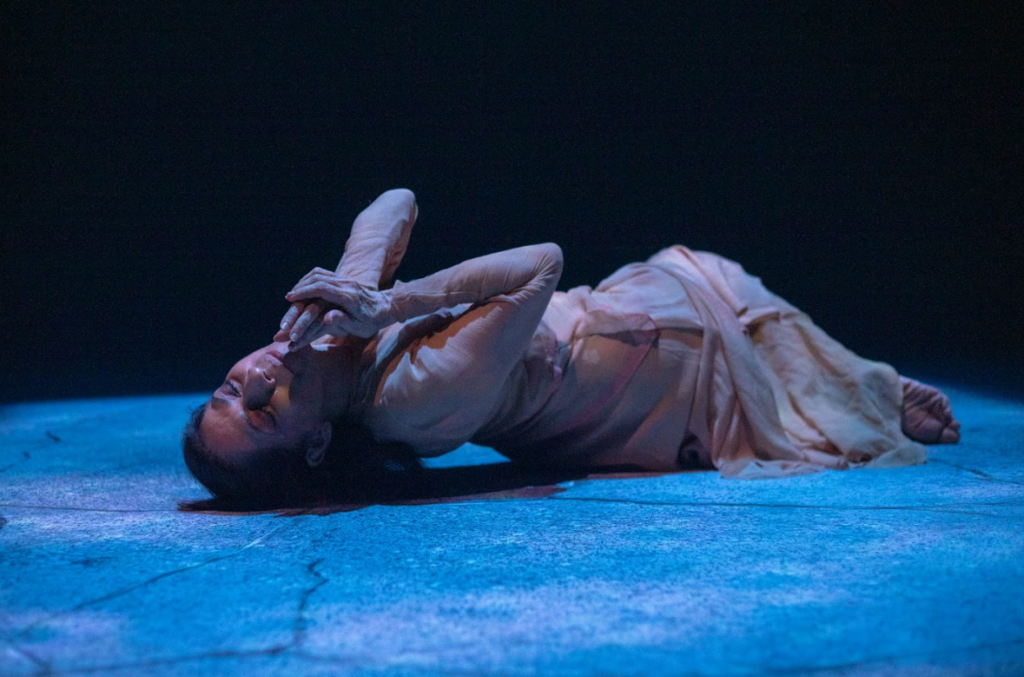
Peeling the Layers… Of female sexual desire… Leading Kathak exponent, Aditi Mangaldas talks about her bold and brave new work, Forbidden, and the story of how it came to be Surely, the idea of Forbidden didn’t happen one day or one night or in a moment, right? But what was that final moment when you decided to distill the thoughts in your head and create a work out of it? Most of my choreographies start off on an autobiographical note, hopefully, eventually opening out in a parabolic universal trajectory; it was the case with Forbidden too. The idea for any production of mine, whether classical or contemporary dance based on Kathak, has always brewed within me for months. If you are open to the pulse of life, then a piece of music, poetry, literature, architecture, movement, nature in its intense beauty and fury, a beautiful painting or sculpture becomes the inspiration and the trigger point. A small seed germinates within your being. For many years I was observing how female sexual desire was trapped in taboos and societal sanctions. Though I come from an extremely liberal family and have lived life mostly on my own terms, these societal taboos do creep in insidiously. The question haunting me was, why is the world scared of female sexual desire? Why are women – the world over – from conservative as well as liberal societies, sanctioned, judged, controlled, hounded, shamed and eventually punished because they have the courage to own their desire? What is the root of this fear? In its very title, Forbidden has a quality of the mysterious in it; something we must not; what was it like for you to explore or traverse into a zone like this? Did you find freedom in the process of this exploration? As women, we grow up realising the taboos attached to female sexual desire – it’s a lived experience, no matter where we come from. As an artiste, I feel compelled to confront these taboos, to acknowledge female sexual pleasure and the ownership of it, which is forbidden. Sexuality is a private affair but all the sanctions attached to it requires and demands taking a stand on the universal, public and personal front. It was not an easy subject, as I realised myself, how deep rooted this fear of female sexual desire was. Quoting the mythologist and storyteller, Devdutt Pattanaik, “… fantasy frightens us, especially female fantasy… One way of regulating fantasy has been by propagating stories where women who pursue their desires are viewed as dangerous, hence need to be restrained for social good.” The process of Forbidden, was like peeling an onion laboriously with every peel making me realise how entrenched this aspect of the forbidden is. In contemporary dance and in the works that you create there is a dramaturg; what is the role of the dramaturg and why is this not yet a prerogative of the classical? For me, as a classical dancer, the aspect of questioning myself has always been interwoven within the repertoire, constantly requiring me to be vigilant. The training, if honestly received, imparts the ability to question oneself fearlessly and critically. Thereby making one their own dramaturg. However, I have not developed this sensitivity when applied to contemporary dance based on Kathak. The dramaturg, in this case Farooq Chaudhry, became the third eye, constantly questioning the intention of every aspect of the production. There is detailed introspection, to ensure honesty towards the work. Female sexual desire is in itself a complex notion to navigate because so little is written or spoken about it for various reasons; what was it like to articulate this in movement? What were some of the challenges you negotiated along the way? The biggest challenge was to confront my own walls, as a woman and as a classical Kathak dancer. The other challenge was transforming these emotions into movement. Forbidden is ferocious and innocent simultaneously. It became a huge challenge to maintain and communicate this duality throughout the piece without unnecessary verbal explanations. I explored many movement vocabularies, slowly letting a tiny essence of them be absorbed within this Kathak being. Forbidden has been realised after months of internalisation, debate, troughs and peaks; as each collaborator offered nuance to the work, till I found myself immersed in it. To create work like this also requires courage; would you like your personality to give your dance that courage or did dance give you the courage to become the person that you are? For me, any production is a two-way process. I would like to be immersed in dance just as much as I would like dance to be immersed in me. Artists are driven to explore subjects that consume them. That drive is a possession which compels artists to face and share provocative and difficult issues. In doing so, their immersion in dance and the dance immersed within their beings is a must and that becomes the fulcrum of the courage that is required for pieces like Forbidden. Lights also play a crucial role in the works that you create; what is the role of lights in this work? I try to encourage the viewer to enter any of my works at multiple and diverse levels. I do not want to put a full stop but like to leave a comma, letting the viewer add their own narrative. For maximising this, all collaborative inputs including light design have a major role to play. It has been a thirty-year dream of mine to work with the legendary light designer, Michael Hulls. Michael was actively involved, not only as a light designer but as a collaborator engaging in all aspects of the work. Only then can a homogenous light design emerge. The lights embody the duality of ferociousness and innocence – they tell a parallel and yet completely in sync narrative of Forbidden. You also acknowledge your mentor here; what is the role of a mentor while creating works like these and why
Point of View
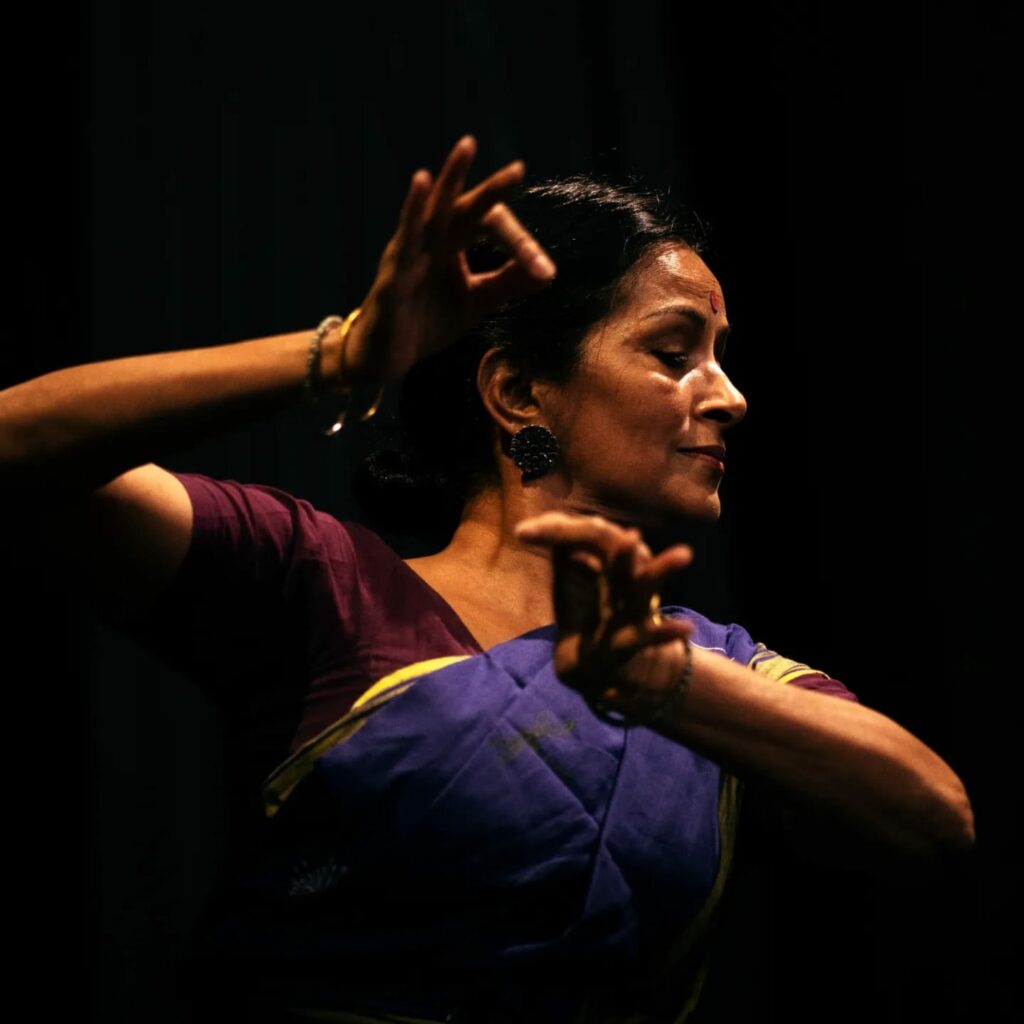
Documenting Transitions Vidhya Subramanian, Bharatanatyam exponent, based in Chennai, shares her perspectives on the many shifts – over time – in teaching and learning in the world of dance Krishna transitions from desire to duty, from lover to king, from Gokulam to Mathura, from a life of leisure to the Gita. Change, sometimes abrupt and at other times measured, is a reality of life and transience is the only constant that has potential for growth but also results in loss. Transitions can be both appealing and arduous. I learnt from a traditional nattuvanar, Guru SK Rajarathnam as well as from Kalanidhi (Narayanan) Maami. How I teach today is, in many ways, informed by how they taught and yet also it is an amalgamation of my performance experience, life lived in the US, my move back to Chennai, and my personal negotiations with the art. Pedagogy was organic when I learnt, methodology developing simply from the day-to-day-ness of teaching and learning. Class would start without much preamble, a simple thatti kumbidudhal, and then on to the item/s to be worked on for the next two hours. With Kalanidhi Maami, I was first introduced to dialogue and analysis, although mostly pertaining to the composition being learnt. All through my learning period, there was no analysis of an idea, conversations about inward journeys, articulation of process, not even a warm-up or cool down. All of these, barring the warm-up and cool down, were simply present in the rigour of dancing, a rigour that revealed much more than words, if one had the patience. Lack of patience wasn’t a choice. Teaching became a part of my life at a very early age, courtesy, my move to the USA. As a young teacher away from home, I relied heavily on how I had learnt as a way to teach. Over time, I added warm-up, adavu categorization, theory lessons, accountability sessions, practice logs, strength training, stretching, a handbook, conversations, and social experiences with students. While setting compositions on my students, I chose to focus on the individual and their strengths/weaknesses as a dancer and a human, in part similar to the way I had learnt. The years of dancing, teaching and living in the USA, as well as a Masters with a focus on Bharatanatyam, meant a gradual expansion of methodology and management. Coming back to India regularly revealed that some of my peers in the field were doing the same. Words such as choreography, process, emotional access, relationship with space, balance and so many more we take for granted today, took on a deeper meaning as an entire generation of dancers began searching. Technology somehow both adds to and subtracts from this journey. Today, we have a young dance generation starved to learn, create, articulate, grow and disagree. It is both energizing and joyfully exhausting to engage with many of them. Teaching is an extension of all the work one has been doing so far and a necessary transference of legacy. For me it continues to be focused on the individual, except merged with the conversation that enriches the process. For many young dancers, the cerebral and the corporeal are in a simultaneous pact in the strive for excellence. Once in a while though, it is necessary to silence that head voice and simply dance. To let the emotions surface, to even revel in them, find the silence in them. The transition into an era of abundance has already occurred. As an entire generation of dancers matures in experience, it is important to reflect upon the conflict between duty and desire, to pause and wonder what defines growth and what has perhaps been lost and left behind.
Books Banter
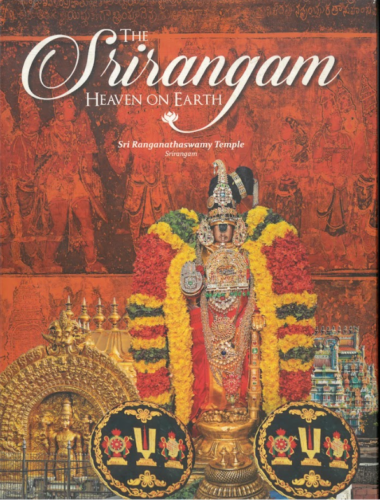
Celebrating Continuity in Tradition Chennai-based historian, writer and author, Dr Chithra Madhavan, an expert in Indian temple architecture, history, sculpture and iconography, shares her thoughts on her book, Srirangam. Srirangam is a fabulous compilation of this temple town; what was your experience of putting it together? The Srirangam temple is an amazing temple-complex which has evolved over many centuries. It is truly a combination of traditional lore, history, architecture, sculpture, inscriptions, rituals, festivals and a whole lot more. It is important to understand that many of the rituals and festivals in this temple are many, many centuries old and are still being practiced today. There has been a continuity in tradition here despite many setbacks. Numerous dynasties have contributed to the architecture and sculpture of this temple. It was a challenge putting this book together, as the different aspects had to be showcased. The contributors have done their best in writing relevant chapters for this book. Without their contribution, this volume would not have been published. As a historian, do you believe that a place never exists in isolation; that its people, culture, society, practices, art, sculpture, architecture all have a crucial role to play? Indeed so. A place can never exist in isolation- there are many factors that make it happen. In times of peace and in times of stress, the reflection is seen on any place and more so in a temple. Rebuilding after an invasion, enhanced social and cultural activities in times of peace, migration of people from other parts of India bringing in their own customs which become entrenched here. These are a few factors that influence the ethos of a place. Srirangam is of particular fascination for classical dance and dancers because of Andal. What aspect of Andal does this book delve into? Andal’s association with Srirangam is well-known. It is here that she merged with God Ranganatha. Her Tamil verses (pasurams) on this deity are many and are recited with fervour even today. There are as many as three sanctums for this Goddess in the Srirangam temple. Many festivals are celebrated here for Andal and she is part of the ethos of Srirangam. This book looks at the different shrines of Andal that are in this temple in the chapters on architecture and sculpture and also many details about this pre-eminent devotee in the chapter on the Azhvars connected with Srirangam. Do you believe also that for any artiste, understanding and appreciating the allied aspects of an idea can help enhance their articulation of a central idea? All of our arts in India are connected. If a performing artist- musician or dancer- wants to sing or dance about Andal, for example, they must know about her life and her association with the different places she was connected with. Likewise, it is mandatory for a historian to know about at least some nuances of allied subjects- literature, music, dance etc. These subjects cannot be studied in isolation. While there has to be a focus on one particular subject, the peripheral ones too need to be studied. This is mandatory. You said this book is extra special to you. Can you tell us why? This book is indeed special to me because first, I am a devotee of God Ranganatha and Goddess Ranganayaki Thayar and also because I am in love with this temple because of its ancient history, architecture, sculpture and inscriptions. This huge temple complex has the largest number of gopurams, the largest number of sanctums, the largest number of mandapams, the largest number of festivals and more than 600 inscriptions. It is a paradise for historians and archaeologists and scholars of religion. It is number one among the 108 Divya Desams (places sanctified by the pasurams of the Azhvars) as eleven of the twelve Azhvars have praised God Ranganatha. For these reasons and more, I’m in love with this temple and so this book is special to me. As a writer and author, does writing each piece or book become a journey of discovery; what was that moment for this book? Indeed, writing or editing each piece or book is a journey of discovery. Since I was not the sole author of this book, but the General Editor (also contributing several articles to it), I learnt a lot from the contributions of the other authors. There wasn’t just one, but several moments of discovery while putting this book together. So many nuances of its tradition like the Araiyar Sevai ritual, the sacred garden from which the flowers are brought to God Ranganatha. So many more were things I did not know much about earlier.